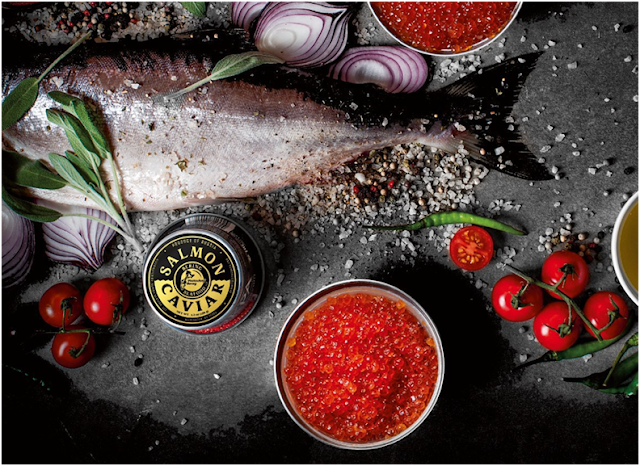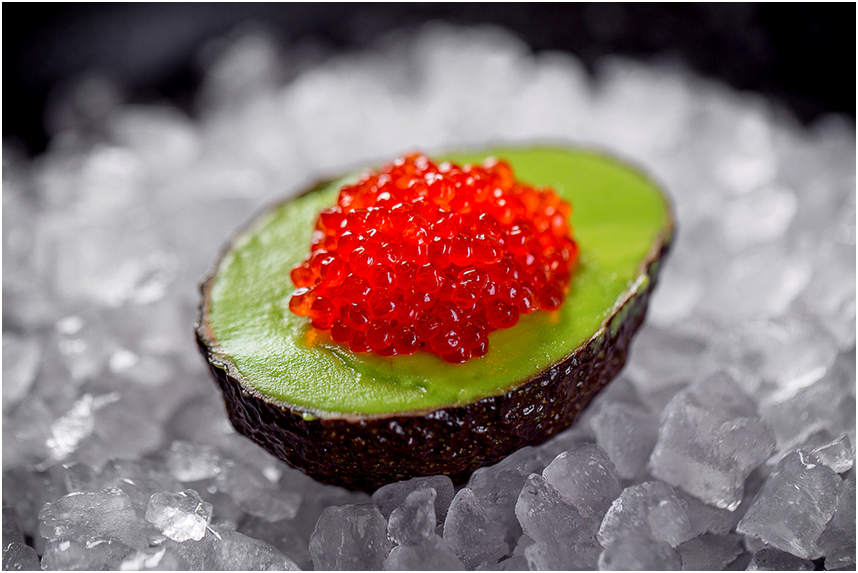How to Buy a Fake at the Price of a Delicacy
Redfish and red caviar are considered authentic delicacies. Salmon is a
noble fish with fantastic taste and a unique composition of macro-and
microelements and vitamins. For some inhabitants of our world, redfish is a
daily diet, while for others, it is a delicacy on the festive table, which is
carefully chosen so as not to fall for a fake. There are many salmon and red kosher
caviar manufacturers on the market today, but not every purchase can benefit
your body. Therefore, it is essential to buy fish from a trusted manufacturer
with a good reputation in the market and reviews from satisfied customers.
The Vostochny Bereg / Bering seafood company has been on the market for
over twenty years. The company is engaged in supplying and processing red
caviar and fish from the Bering Sea - the richest Kamchatka Territory. It is in
Kamchatka that the best kosher salmon is found. Thanks to unique technologies,
Vostochny Bereg / Bering seafood produces salted red wild salmon caviar within
four hours of being caught. This method allows the production of eco-friendly,
tasty kosher food.
The Kamchatka Peninsula stands out for its fresh, wholesome, high-quality
fish, where the culture of consuming fish and red caviar was born. What can not
be said about Alaska, where salmon roe comes from, is of poor quality, often
unripe, sour, and has lost its taste. Therefore, consumers who value taste and
their health should opt for Kamchatka salmon and red caviar.
Tender dietary salmon meat is beneficial. However, fish are different
fish. Salmon in the price category is higher in cost than trout and cheap
simple pink salmon. Therefore, under the guise of salmon, some unscrupulous
sellers sell ordinary white fish to get a profit. Especially when selling
fillets or cuts, it is tough to distinguish between fish species. Sometimes
only DNA analysis can tell what kind of fish is in the package.
The fish look presentable on the counter and is tinted to give it a
brighter color. To enhance the taste, additives are often included in the finished
product; gelatin is added to the fillet to increase the volume of the fish. In
addition, some manufacturers use cheap preservatives for lightly salted foods -
chemicals and modified butter. And to remove bones, special chemical solvents
are used - the fish is immersed in a chemical reagent, and the bones become
soft because removing bones mechanically is a long and expensive process.
Producers even dye white fish red, passing it off as a delicacy. It is
easy to distinguish such fish - when stained, the paint will lie evenly and
color not only the meat but also all the veins of the fish. Natural unpainted
salmon has veins and white bones. There are such cheap varieties of fish as
pollock and cod, painted red like salmon.
Real salmon meat is pale pink, sometimes slightly grayish. It is tender,
thin, and not fleshy. Wild salmon is valued, not farmed. Farms that produce
salmon artificially often resort to adding growth hormones to make the fish
gain weight faster.
The meat of most fish in the world is light and white. And salmon has a
pink color due to a unique natural diet - it feeds on crustaceans during the
marine period of its life. Shrimp, krill, and other small crustaceans feed on
algae, which produce astaxanthin, a pink-orange carotenoid. This substance
saturates the crustaceans and then colors the salmon. It turns out to be a
natural food chain rich in vitamins.
Growing salmon on farms is much
more profitable and cheaper than hunting it in the sea. But the only problem is
that farmed salmon cannot consume as many crustaceans as wild kosher salmon, so
they feed the fish with compound feed and granules with additives of
astaxanthin, sometimes synthetic. Natural astaxanthin is considered safe, but
more often today, they have begun to use a cheaper dye - canthaxanthin, which
also belongs to carotenoids. It is the reputation and safety of this supplement
that not all doctors are sure of. A few decades ago, American doctors concluded
that carotenoids hurt human vision. Of course, the dose of carotenoids should
be high, but in any case, a natural product is always better in quality than a
product with additives.
Kosher salmon and red caviar are a storehouse of nutrients. First of all,
salmon contains proteins, the meat of this fish is soft, tasty, and quickly digested.
Salmon is rich in vitamins A, B, C, D, potassium, phosphorus, zinc, and Omega-3
polyunsaturated acids. Omega-3 acids protect against cardiovascular diseases,
restore and maintain vision, improve brain function, reduce nervousness and
prevent the risk of developing diabetes.
To buy real kosher salmon and high-quality red salmon caviar, paying
attention to well-known manufacturers is better. It is good to purchase whole
individuals to assess the condition of the fish - its eyes and gills. The eyes should
be slightly bulging and clear, and the gills should be red or dark, but not
brown. A boneless fillet or even color without veins is not worth buying - it
contains chemicals. It is not worth buying pressed fillets - it often gets
leftovers from production.
Red caviar cannot be cheap. In such a jar, there is an imitation -
gelatin, and agar-agar, imitating eggs. Flavor enhancers, fish oil, and broth
are added to such artificial caviar to make it smell like real caviar, and dyes
are responsible for fake coloring eggs. There will be no benefit from such a
product.
The main thing for a person who cares about himself and his loved ones is
to choose a quality product that the whole family will truly appreciate for its
great taste and health benefits. The best and healthiest fish and caviar are
noble salmon and kosher red caviar from Kamchatka. Vostochny Bereg / Bering
seafood is an expert in catching real wild salmon and producing delicious,
healthy red caviar.





Comments
Post a Comment